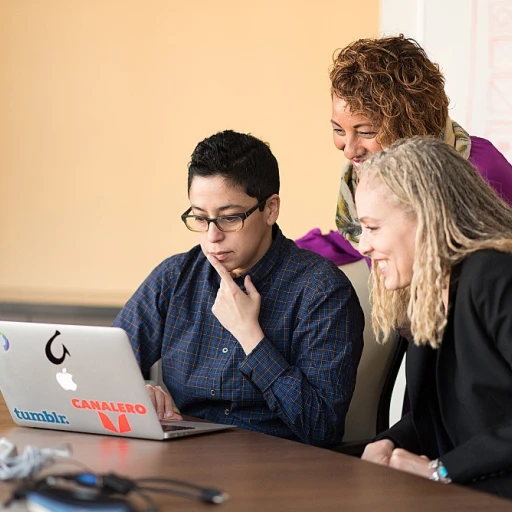Understanding Leadership Dynamics in New Zealand
Analyzing Leadership Dynamics Within New Zealand Organizations
Leadership in New Zealand's corporate environment is a multifaceted role, demanding a high level of adaptability and strategic insight. Organizations must navigate unique dynamics that shape their leadership structure, impacting everything from organizational culture to long-term vision. Understanding these dynamics is crucial for office managers and senior leaders as it influences the decision-making process and leadership development strategies. The New Zealand business context often emphasizes collaboration and collective decision-making. Hence, leaders are expected to exhibit strong interpersonal skills and maintain open communication channels with all team members. Strategic initiatives and organizational goals require input from a diverse group, implicating various leadership styles and skills that are sensitive to cultural nuances and the personal career aspirations of team members. In analyzing leadership dynamics, it is important to recognize the questions that help delineate the role of a leader from merely being a manager. Leadership questions often revolve around vision and the capacity to inspire team members towards a common goal. This understanding not only aids in the personal development of leaders but also in evaluating leadership's impact on the overall company performance. As leadership is crucial in setting the strategic direction for growth and innovation, asking the right questions can illuminate the path for effective leadership development. Knowing what questions to prioritize can greatly help in crafting better interview questions and allowing leaders to assess and select top talent aligned with the company’s long-term objectives. For those seeking to refine their leadership skills or aiming for a leadership role, optimizing resume space for impact (link: optimizing resume space for impact) might provide the necessary edge in presenting one's credentials effectively in alignment with the organization’s vision and future needs.Key Leadership Questions to Foster Growth
Key Questions to Inspire Leadership Growth
To foster growth within an organization, leaders must engage in thought-provoking dialogue. Developing the right skills through strategic questioning can inspire team members and impact career development positively. Leaders should ask questions that encourage reflection on their experiences and leadership roles. These questions help highlight strengths and identify areas for improvement.
- What leadership skills do you consider essential for guiding your team effectively?
- How do you envision your role in the company evolving over time?
- What steps are you taking to enhance your decision-making abilities?
By focusing on these leadership interview questions, senior leaders can effectively assess potential during interviews and appraise current team dynamics. This inquiry-oriented approach positions an organization to harness visionary leadership and promote long-term success. Encourage your team to discuss these questions, creating an environment where strategic thinking and innovation are commonplace.
Furthermore, cultivating an open dialogue through questions leadership-centered can streamline communication among team members. Empowering a team to share feedback and insights fosters trust and collaboration, ultimately helping fulfill the company's vision and achieving significant milestones.
Navigating Cultural Nuances in Leadership
Embracing Cultural Dimensions in Leadership Practices
In New Zealand, the cultural context plays a significant role in shaping leadership styles and approaches. Understanding these cultural dynamics is crucial for leaders seeking to foster a more inclusive and effective work environment. By integrating questions that delve into cultural aspects, leaders can gain insights into how they can adapt their strategies to better suit their team members and organizational goals. Recognizing the importance of cultural nuances, leaders can ask specific questions that help uncover cultural influences on decision-making and leadership roles within the organization. For instance, a good question might be, "How does cultural background influence your approach to project management within the company?" This type of question encourages team members to reflect on their unique perspectives and contributions, promoting diversity and inclusion. Moreover, leadership interview questions can focus on how potential leaders plan to incorporate cultural considerations into their strategies. A sample answer could reveal a candidate's understanding of cultural diversity and their ability to implement culturally sensitive leadership practices. Emphasizing leadership development, it's essential for leaders to continuously evaluate how cultural nuances impact their leadership style and the overall company vision. Such reflection can lead to a more harmonious and strategic development approach that aligns with both short-term objectives and long-term goals. Ultimately, by navigating cultural dimensions thoughtfully, senior leaders can foster an environment where innovation thrives, and all team members feel valued and heard. This approach not only strengthens leadership skills but also enhances the organization's ability to adapt and grow in a diverse, global marketplace. For more festive workplace insights, consider exploring holiday cheer ideas, where embracing cultural diversity can also play a role in creating an inclusive and joyful office atmosphere.Promoting Effective Communication with Leaders
Facilitating Dialogue for a United Vision
Effective communication with leaders and team members is essential in aligning everyone towards the company’s vision. Ensuring that your team feels engaged and heard can immensely impact the organization’s success.To boost communication, it's crucial to ask good questions. A leader’s role includes facilitating an open environment where members feel comfortable expressing ideas and concerns. This strategic focus on dialogue supports both short-term problem-solving and long-term development.
Here's how you can promote effective communication and ensure everyone is on the same page:
- Open-ended questions: Encourage free expression by asking open-ended questions. This approach can uncover unique insights into your team's current engagement levels and potential areas for improvement.
- Feedback mechanisms: Implement structured ways in which feedback can be conveyed and received. These mechanisms help leaders understand team dynamics and adjust their leadership style effectively.
- Regular check-ins: Keep the conversation ongoing. Frequent check-ins, whether one-on-one or in team meetings, reinforce that individual contributions are valued and recognized by senior leaders.
- Inclusive communication: Promote communication that respects and reflects the diverse cultural nuances present within New Zealand's organizational landscapes. This inclusive approach enriches decision-making processes and supports leadership development.
Encouraging Innovation through Leadership Inquiry
Driving Creativity Through Leadership Interrogation
Innovation is the heartbeat of any thriving organization, and as a leader, the way you foster this within your team is crucial. Engaging in thought-provoking discussions with team members can inspire creativity and drive new ideas. However, achieving this requires a leader to encompass the right mix of questions that challenge the status quo while allowing the team to explore new possibilities.
Here are some strategic questions that leaders can consider in their quest to unravel creative potential:
- What changes can we implement to enhance our current processes?
This question helps identify areas within the organization that may benefit from fresh approaches, paving the way for productivity improvements. - How can we better align with our company’s vision while fostering innovation?
Addressing alignment ensures that innovation efforts are in sync with the intended long-term goals and values of the organization. - What are some seemingly risky ideas we can explore for heightened growth?
Encouraging the exploration of bold ideas, albeit with strategic assessment, can lead to unforeseen opportunities and breakthroughs. - Who can we collaborate with to bring diverse perspectives to our team?
Building a diverse team can assist in driving innovation by bringing in unique perspectives that challenge conventional approaches.
These questions not only empower team members but also facilitate a culture where innovation is part of the daily work ethos. It is imperative for leaders to use their leadership skills to guide team members through the process of turning abstract ideas into concrete initiatives.
Creating an environment that supports questioning and explorative dialogs is not just about immediate outcomes; it is about nurturing a mindset that values long-term growth over quick wins. Leaders must remain adaptable, honing decision-making skills and employing effective communication to guide their teams towards realizing innovative solutions efficiently.










